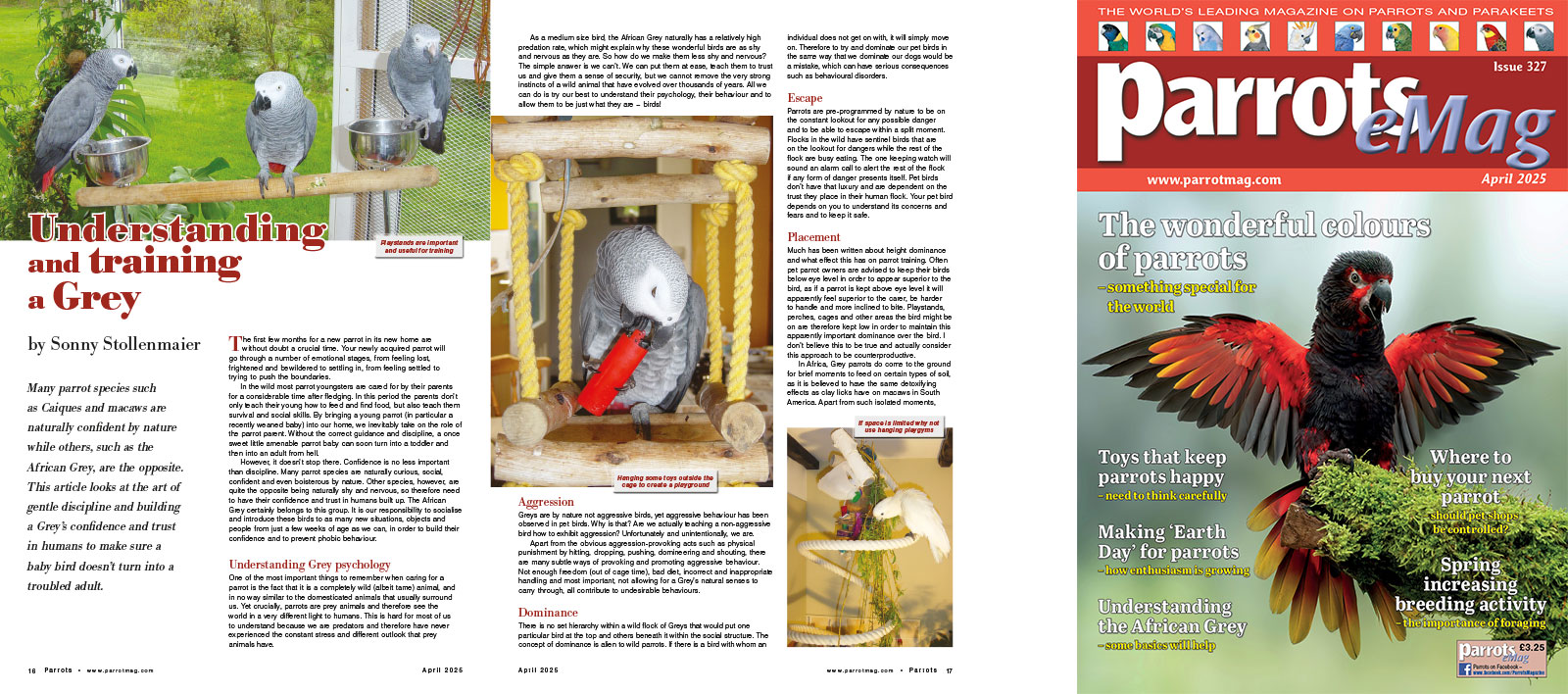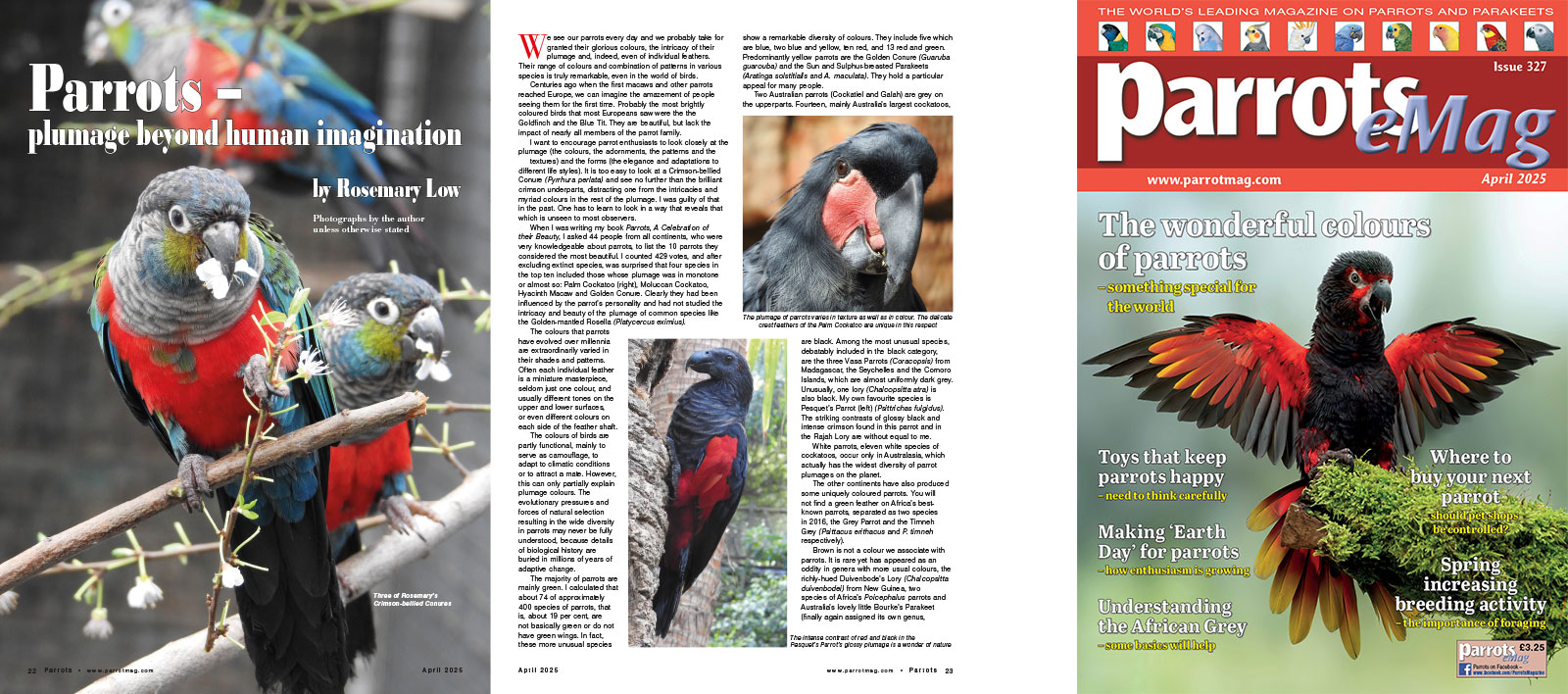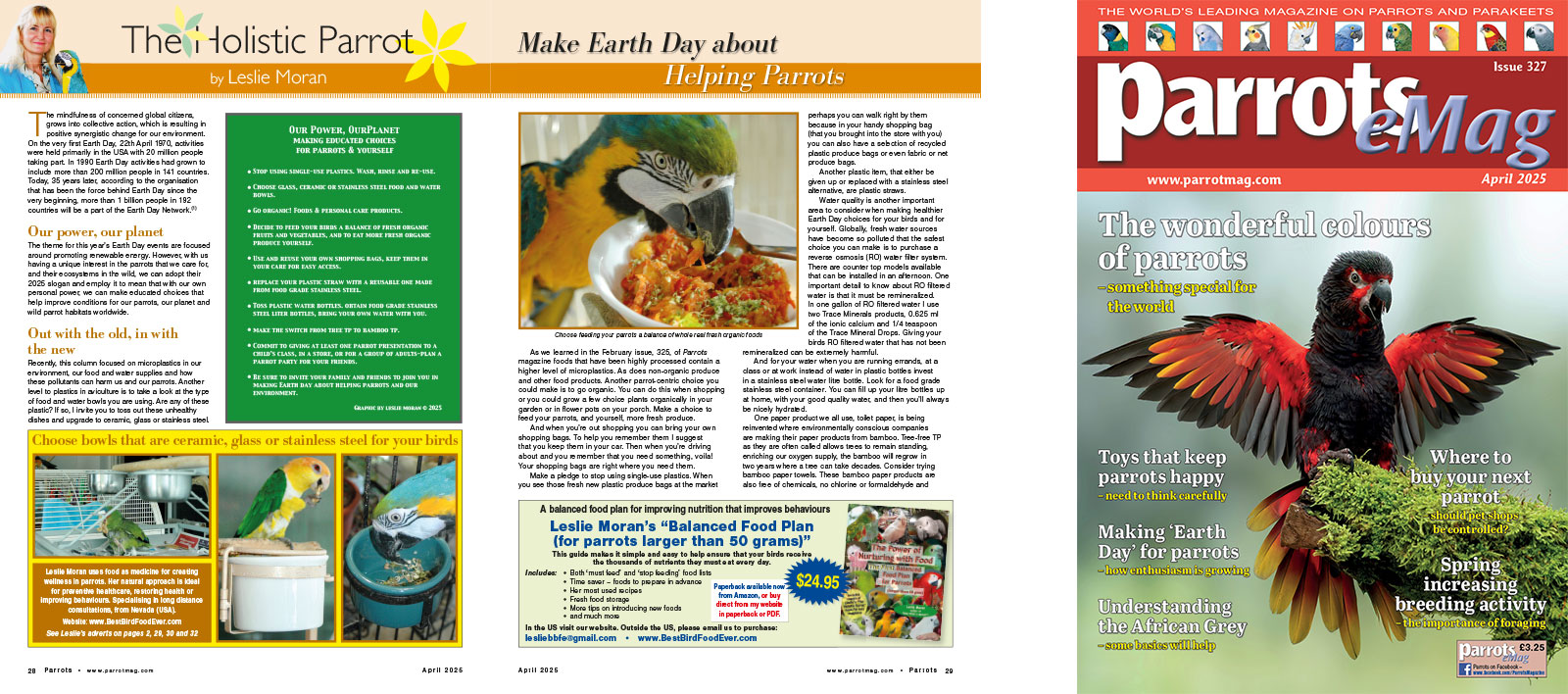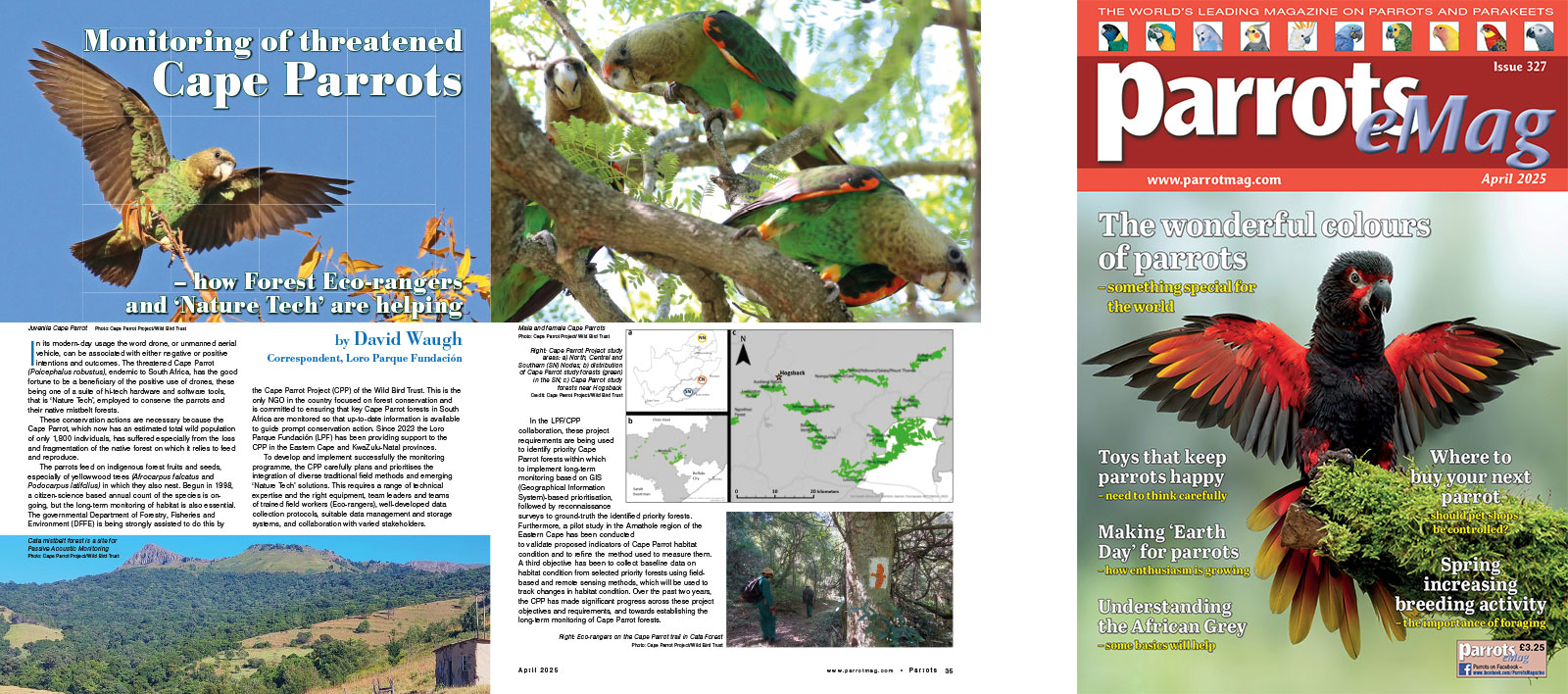
By Sonny Stollenmaier
Many parrot species such as Caiques and macaws are naturally confident by nature while others, such as the African Grey, are the opposite. This article looks at the art of gentle discipline and building a Grey’s confidence and trust in humans to make sure a baby bird doesn’t turn into a troubled adult.
The first few months for a new parrot in its new home are without doubt a crucial time. Your newly acquired parrot will go through a number of emotional stages, from feeling lost, frightened and bewildered to settling in, from feeling settled to trying to push the boundaries.
In the wild most parrot youngsters are cared for by their parents for a considerable time after fledging. In this period the parents don’t only teach their young how to feed and find food, but also teach them survival and social skills. By bringing a young parrot (in particular a recently weaned baby) into our home, we inevitably take on the role of the parrot parent. Without the correct guidance and discipline, a once sweet little amenable parrot baby can soon turn into a toddler and then into an adult from hell.
Get your copy now

By Rosemary Low
We see our parrots every day and we probably take for granted their glorious colours, the intricacy of their plumage and, indeed, even of individual feathers. Their range of colours and combination of patterns in various species is truly remarkable, even in the world of birds.
Centuries ago when the first macaws and other parrots reached Europe, we can imagine the amazement of people seeing them for the first time. Probably the most brightly coloured birds that most Europeans saw were the the Goldfinch and the Blue Tit. They are beautiful, but lack the impact of nearly all members of the parrot family.
I want to encourage parrot enthusiasts to look closely at the plumage (the colours, the adornments, the patterns and the textures) and the forms (the elegance and adaptations to different life styles). It is too easy to look at a Crimson-bellied Conure (Pyrrhura perlata) and see no further than the brilliant crimson underparts, distracting one from the intricacies and myriad colours in the rest of the plumage. I was guilty of that in the past. One has to learn to look in a way that reveals that which is unseen to most observers.
Get your copy now

The Holistic Parrot by Leslie Moran
The mindfulness of concerned global citizens, grows into collective action, which is resulting in positive synergistic change for our environment. On the very first Earth Day, 22th April 1970, activities were held primarily in the USA with 20 million people taking part. In 1990 Earth Day activities had grown to include more than 200 million people in 141 countries. Today, 35 years later, according to the organisation that has been the force behind Earth Day since the very beginning, more than 1 billion people in 192 countries will be a part of the Earth Day Network.
The theme for this year’s Earth Day events are focused around promoting renewable energy. However, with us having a unique interest in the parrots that we care for, and their ecosystems in the wild, we can adopt their 2025 slogan and employ it to mean that with our own personal power, we can make educated choices that help improve conditions for our parrots, our planet and wild parrot habitats worldwide.
Recently, this column focused on microplastics in our environment, our food and water supplies and how these pollutants can harm us and our parrots. Another level to plastics in aviculture is to take a look at the type of food and water bowls you are using. Are any of these plastic? If so, I invite you to toss out these unhealthy dishes and upgrade to ceramic, glass or stainless steel.
Get your copy now

By David Waugh, Correspondent, Loro Parque Fundación
In its modern-day usage the word drone, or unmanned aerial vehicle, can be associated with either negative or positive intentions and outcomes. The threatened Cape Parrot (Poicephalus robustus), endemic to South Africa, has the good fortune to be a beneficiary of the positive use of drones, these being one of a suite of hi-tech hardware and software tools, that is ‘Nature Tech’, employed to conserve the parrots and their native mistbelt forests.
These conservation actions are necessary because the Cape Parrot, which now has an estimated total wild population of only 1,800 individuals, has suffered especially from the loss and fragmentation of the native forest on which it relies to feed and reproduce.
The parrots feed on indigenous forest fruits and seeds, especially of yellowwood trees (Afrocarpus falcatus and Podocarpus latifolius) in which they also nest. Begun in 1998, a citizen-science based annual count of the species is on-going, but the long-term monitoring of habitat is also essential. The governmental Department of Forestry, Fisheries and Environment (DFFE) is being strongly assisted to do this by the Cape Parrot Project (CPP) of the Wild Bird Trust. This is the only NGO in the country focused on forest conservation and is committed to ensuring that key Cape Parrot forests in South Africa are monitored so that up-to-date information is available to guide prompt conservation action. Since 2023 the Loro Parque Fundación (LPF) has been providing support to the CPP in the Eastern Cape and KwaZulu-Natal provinces.
Get your copy now




